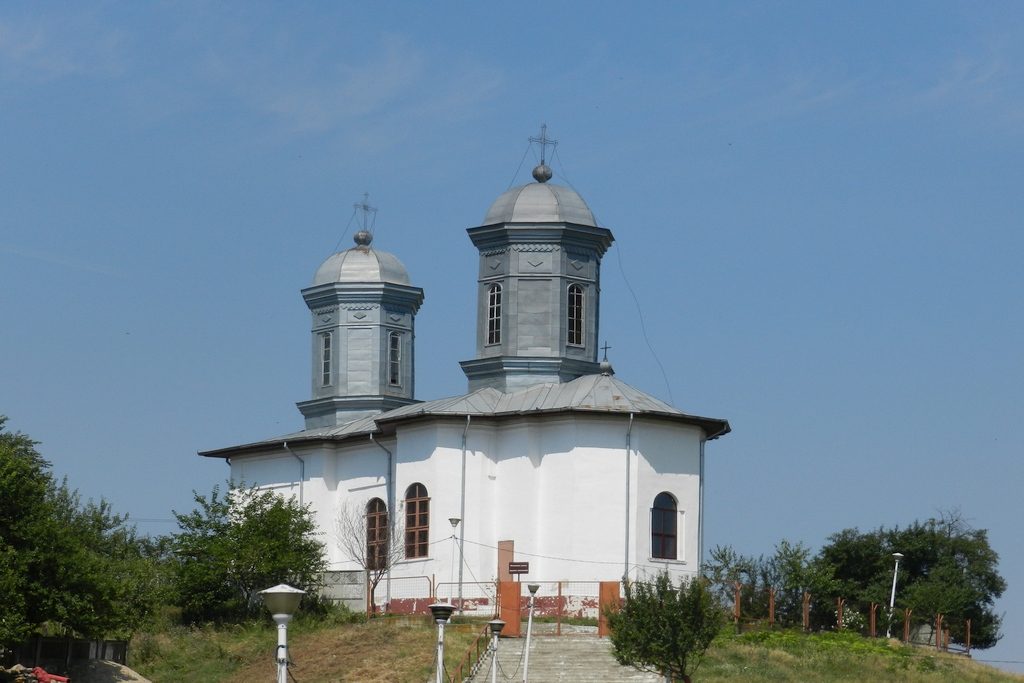

The monument of Parish Church from Fratesti, county of Giurgiu celebrates its patron saint of Holy Martyr Catherine.
The halidom was built after the Romanian Independence War and was consecrated in 1980.
Every year, on the celebration of the patron saint, the believers have the opportunity to worship the relics of the Great Martyr Saint Catherine, which were offered to the sanctuary from Fratesti village by the Diocese of Giurgiu in 2008. It is said the village was kept away from many evils and the parish have much spiritual growth since receiving the holy relics.
Fratesti is a commune of Giurgiu county, Muntenia, Romania, consisting of Cetatea, Fratesti (the residence) and Remus villages.
The village is located south of the county, to the north of Giurgiu. It is crossed by the DN 5 national road, which connects Giurgiu and Bucharest and, by DN5B national highway, which connects Giurgiu and Ghimpati. The Bucharest-Giurgiu railway lines (which is serviced by Station Fratesti) and Videle-Giurgiu (which is serviced by moving halt Balanoaia and by passengers halt Cetatea) are crossing the village.
According to the census conducted in 2011, the Fratesti village population stands at 5.361 inhabitants, on decline compared to the previous census in 2002, when it had registered 5.616 inhabitants. Most of inhabitants are Romanian (88.4%), with a minority of Gypsy (5.45%). The ethnicity for 6,08% of population is unknown. In terms of confessional, most of the inhabitants are Orthodox (91.62%), with a minority of Seventh-day Adventists (1.59%). The confession for 6,08% f the population is unknown.
At the end of the nineteenth century, the village was part of Marginea, Vlaşca County and consisted only of the village of residence, with 2011 inhabitants. A church and a mixed school, were in the commune and the main owners were the heirs of the Lady Momulu.[7] At that time, on the current territory of the commune, were also operating in the same part, the Balanoaia commune, with its villages Coşoveni, Nazaru, Onceşti, Turbatu, Cantemir and Ruica totalling 2130 inhabitants; the church and the mixed school were also operating here (in Bălănoaia, Turbatu, Oncești and Cantemir).
The Socec 1925 Yearbook records the Fratesti commune as part of Calugareni, of the same county, with 2540 inhabitants in the villages Daia, and Fratesti; and Balanoaia commune as part of Danube, with 2350 inhabitants in the villages Balanu, Balanoaia, Oncesti and Turbatu. In 1931, the Remus commune has occurred with its Remus village, as a suburban commune of the Giurgiu urban commune, and Balanoaia commune consisting of the villages Balanoaia and Turbatu, also becoming a part of the Giurgiu suburban commune. In 1950, the Remus, Fratesti and Balanoaia (called now Turbatu) were included in the regional town of Giurgiu, Bucharest area. The village and commune Turbatu took the name of Cetatea in 1964.
In the commune are 5 constructions classified as architectural monuments: the church of „ “Holy Apostles Peter and Paul” and “Assumption” (1864) from Cetatea village; a Church in ruins from Siliste (before 1791); Marin Popescu House (1840), today a village museum; Marin Slavuica house (1850); and the church of „Saint Catherine” (1880), the last four from Fratesti village.

